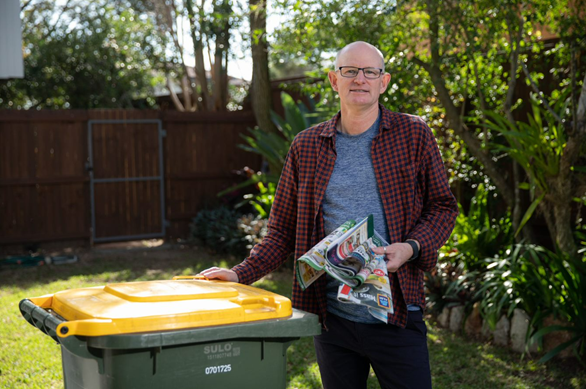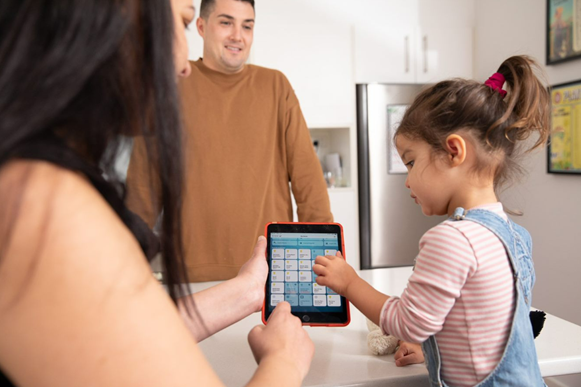REDUCE EMISSIONS, SUSTAINABLE LIVING
MAKING SUSTAINABLE RESOLUTIONS THAT STICK
Believe it or not, it’s officially the New Year! The Christmas ham, presents and festive lights are now a distant memory. But before your New Year’s resolutions also start to fade away, Sam Mullen investigates how we can make sustainable resolutions that stick…
It happens every year. You start the year with the best of intentions by telling friends and family your resolutions or even writing them down, because you know that will help keep you accountable. Maybe you want to save money, manage time better, or, keep living more sustainably. Yet, as the holidays end, we go back to work and our lives start to fill up again, it can be easy for those sustainable resolutions or new habits to slip back into old ways.
Thankfully, behavioural psychologists have been studying this for decades and have come up with solid research to help people set goals that they are motivated to achieve. Researchers Edwin A. Locke and Gary Latham are pioneers in Goal Setting Theory and in this article we offer five principles from their work, viewed through a sustainability lens, to help improve your chances of having sustainable resolutions that stick this year. Plus, we’ve added our own suggestion to help deliver on these principles.
1. CLARITY
This is something you probably already know but it calls for repeating: set clear and precise goals. This ensures that you know specifically what you’re going to achieve, how you’re going to change and how to track your progress (more on that in point four).
Instead of: “Recycle more”
Replace with: “Avoid single-use plastic for at least 100 days”
When you give yourself a clear and precise goal, specifying an action or product (e.g. single-use plastic) as well as a time period (e.g. 100 days), you can think precisely about your action so you know exactly if you’re slipping up or not.

2. CHALLENGE
Ensure that your resolutions are the “Goldilocks” level of achievability. If they are too easy, it won’t feel fulfilling or motivating to accomplish, whereas if they are too hard, your resolution may feel overwhelming and disincentivise you to even try in the first place.
Instead of: “Stop using my car.”
Replace with: “Swap one return car trip a week with walking or cycling.”
Waking up one day with a desire to completely shift your lifestyle away from private car use can seem impossible. So instead, think about what is actually achievable and will still make you feel satisfied to achieve. Removing one weekly car trip and replacing it with active travel will have a noticeable impact on your carbon footprint and help gradually reduce the amount of time you rely on your car to get around.

3. COMMITMENT
If you’re reading this blog, it’s probably safe to say you care about sustainability and you’re likely committed to travelling down this path. It doesn’t hurt, however, to learn ways to keep you motivated and committed to your goals.
A useful method to keep you motivated to sticking to your sustainable resolution is to compare your ‘now’ self with your ‘future’ self.
Firstly, think about what your life looks like now, without having achieved the resolution. Next, think about what impact you will make in one year if you stick to the change. Now, think about the same for five years’ time, and then 10 years’ time. In other words – think about how your future self will benefit as a result of your goal. Visualising not just the actions but the results of your actions can help individuals stay motivated and committed.
Instead of: “Air dry my clothes instead of using the dryer.”
Replace with: “Donate/sell my dryer, knowing that I can save $190 a year by air-drying.”

The average Brisbane household can save $190 annually by ditching the dryer. This is very achievable in our warm, sunny climate. If you consider yourself today, using the clothes dryer once a week will consume $3.65 worth of electricity each week. Yet, through one simple act of not using the dryer, over a decade this will avoid 7 tonnes of carbon dioxide being emitted into our atmosphere and save $1,900 on bills. Committing to this one small change can have significant long-term effects!
4. FEEDBACK
We’re more motivated to continue achieving goals if we receive feedback on our progress. In a business sense, this might be regular catch ups with our manager, but individuals are motivated by feedback for their own goals too. Don’t necessarily think of it as someone telling you that you’re doing a great job but more so that you are regularly seeing the benefits of your actions.

Instead of: “Try not to use big, energy-guzzling appliances.”
Replace with: “Buy a home energy monitoring system to understand, monitor and minimise home energy consumption.”
Having the visual cue of seeing your energy usage go up and down with different levels of appliance consumption can help make the ‘invisible’ visible. This provides positive feedback that your change in behaviour has a measurable outcome which can encourage you to keep going.
5. TASK COMPLEXITY
This is a big one. Research shows the simpler a resolution is, the more motivated people are to stick with it.
Instead of: “Research carbon offset products and invest in offsets that are reputable, and at a level equivalent to my personal carbon footprint to offset it correctly.”
Replace with: “Switch to a Government accredited GreenPower electricity plan by the end of March.”
Setting yourself goals that require a lot of time and energy to put into action can reduce your motivation. Instead of researching carbon offset products, their accreditation, and prices (steps that can give you paralysis by analysis), try calling up your energy provider and switching to a 100% GreenPower electricity plan. All your home electricity will come from zero-emission renewable energy plants, significantly reducing your carbon fooptrint. Read more about GreenPower and how it can reduce your carbon emissions.

6. TAKE THE BRISBANE CARBON CHALLENGE
Taking the Brisbane Carbon Challenge is an easy first step to help you with the goal-setting principles above so you can set sustainable resolutions. You can use the online carbon calculator to help identify your current situation, then commit to action and retake the calculator throughout the year to get feedback and see the results. Use the online tips and resources to learn different ways to reduce your carbon emissions and help set goals that are clear, not too complex and challenging enough to be motivated to stick to them. Thousands of Brisbane households have already taken the Brisbane Carbon Challenge, so why not make it your one sustainable resolution this year?
A final note: setting goals and resolutions are a fantastic way to effectively change your behaviour, as proven by Locke and Latham. However, they shouldn’t be a source of added pressure or unnecessary anxiety. Remember that while climate action is paramount, take care not to put the stress and anxiety of the world’s climate crisis on your shoulders alone. Be kind to yourself along your sustainable living journey – remembering the pathway to success is simply the consistent flow of tiny steps.
Sources:
Locke, E. and Latham, G. (1990). A theory of goal setting and task performance. Englewood Cliffs: Pearson College Div.
Behavioral Grooves podcast, Episode 147: Gary Latham, PhD: Goal Setting, Prompts, Priming, and Skepticism
Brisbane Carbon Challenge, Carbon-reducing actions list.
The author

Sam Mullen
Sam is a sustainability specialist at Brisbane Sustainability Agency and enjoys helping residents and community groups understand and reduce their climate impact while also promoting a circular economy.








